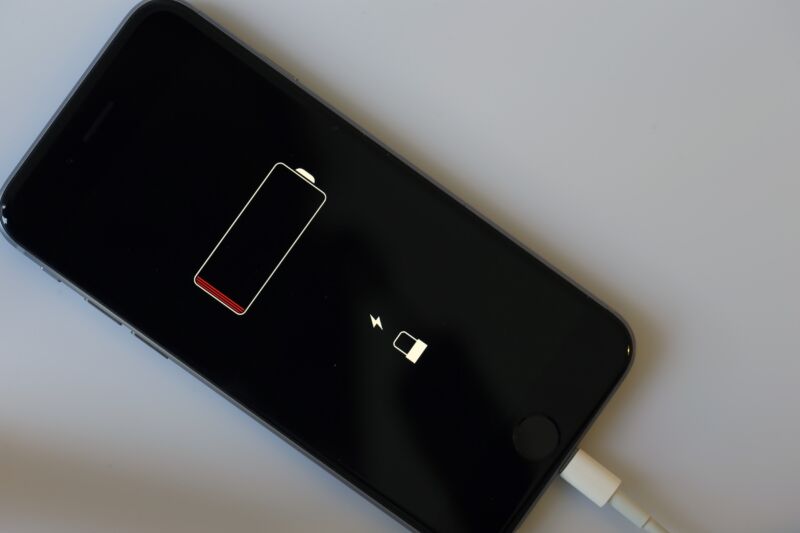
Getty Images | Chesnot
US-based iPhone users are finally getting long-awaited payments to compensate them for Apple’s decision to throttle the performance of iPhones with degraded batteries.
Apple agreed to settle with iPhone users in March 2020, but class-action lawsuits and settlements often take years to be resolved and paid out. This case took a few years because the settlement’s court approval was temporarily vacated on appeal but later reinstated.
The settlement was for a minimum of $310 million and a maximum of $500 million, including attorney’s fees of $80.6 million and the costs of distributing the settlement fund. Apple agreed to provide $25 payments to affected users for each eligible iPhone, though that amount could have increased or decreased based on the number of approved claims.
It seems the standard payment increased, as various people reported getting $92.17 payments this past weekend. I was one of the people who received an email notice stating I was eligible for the settlement about 3.5 years ago, and I submitted a claim on July 24, 2020. I received a $92.17 deposit to my bank account on Saturday that was labeled “IN RE APPLE INC Payouts.”
iPhone owners were required to submit their claims by October 6, 2020. The payments were for US-based owners of an iPhone 6, 6 Plus, 6s, 6s Plus, 7, 7 Plus, or SE who “experienced diminished performance” on their devices while running affected versions of iOS before December 21, 2017.
Why it took over three years
As the most recent update on the settlement website notes, the US Court of Appeals for the 9th Circuit “has dismissed the last remaining appeal in the In re Apple Inc. Device Performance Litigation, and the Effective Date of the Settlement, as described in the Settlement Agreement, occurred on November 6, 2023.” Payments were scheduled for January 2024 based on the timeline that was set forth in the settlement.
So what happened in the three-plus years since Apple agreed to the settlement? Here’s a summary.
After all iPhone owners’ claims were submitted in 2020, the US District Court for the Northern District of California heard arguments on the named plaintiffs’ motion for final approval of the settlement. The district court judge granted that “final” approval in March 2021.
Several parties objected to the settlement, requiring the 9th Circuit appeals court to hear challenges. One appellant, called Best Companies, Inc., claimed that the district court provided inadequate notice of the settlement to “nonnatural persons” such as private companies. Best Companies is an Oklahoma-based construction company that said it bought at least 10 iPhones subject to the settlement for its employees.
The construction company’s objections were rejected by the 9th Circuit in its October 2022 order. A panel of judges agreed with the district court that “the free media coverage and individual notice to device users was more than adequate to reach nonnatural persons.”
The October 2022 ruling also handled an appeal filed by several individuals who objected to the settlement. They didn’t succeed in changing the settlement in any significant way, but their appeal forced the district court to fix problems in its original order.

